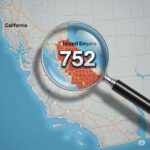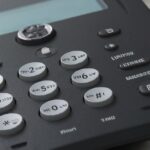To put it simply: No, the 733 area code is not a valid, assigned area code for any city, state, or region within the United States or the broader North American Numbering Plan (NANP), which includes Canada and parts of the Caribbean.
Understanding Unassigned Area Codes
The authority that manages phone numbers, the North American Numbering Plan Administrator (NANPA), has a pool of possible three-digit area codes. While many are assigned to specific geographic locations (like 212 for New York City or 310 for Los Angeles), many others are kept in reserve or are officially designated as “unassigned.” The 733 area code falls into this unassigned category. This means no legitimate phone calls from within the US will ever originate from this area code.

Why Would You Receive a Call from a 733 Area Code?
If the 733 area code isn’t real, how can it show up on your phone? The answer almost always involves a deceptive practice known as caller ID spoofing.
The Role of Caller ID Spoofing
Scammers and illegitimate telemarketers use technology to manipulate the caller ID information that appears on your screen. They can make it look like they are calling from any number they choose, including unassigned ones like the 733 area code.
There are a few reasons why they do this:
- To Evade Call Blocking: By using a fake or non-existent area code, they can circumvent call-blocking apps and services that target known spam numbers.
- To Arouse Curiosity: An unusual or unfamiliar area code might pique your interest, making you more likely to answer the call.
- To Conceal Their Identity: Using a fake number makes it nearly impossible for the average person to trace the call back to its true origin, allowing scammers to operate with a greater degree of anonymity.
Because the 733 area code is not in service, any call or text you receive from it is, by definition, not from a legitimate source and should be treated as a potential scam.
What to Do If You Get a Call from an Unassigned Area Code
Whether it’s the 733 area code or another number you don’t recognize, following a few simple security steps can keep you safe.
- Don’t Answer the Call
If the number is unfamiliar, it’s best to let it go to voicemail. A legitimate caller with important business will leave a message identifying themselves and their reason for calling. Scammers and robocallers will typically just hang up and move on to their next target.
- Never Call Back
Resist the urge to call the number back out of curiosity. Doing so only confirms that your phone number is active, which can lead to your number being added to more spam lists, resulting in an increase in unwanted calls.
- Do Not Engage or Share Information
If you do answer by mistake, and the caller asks for personal information—such as your Social Security number, bank account details, or passwords—hang up immediately. Legitimate organizations will not ask for sensitive data in an unsolicited call.
- Block and Report the Number
Use your smartphone’s built-in feature to block the number. This will prevent them from contacting you again from that specific number. You can also help combat these operations by reporting the scam call to the Federal Trade Commission (FTC) through the Do Not Call Registry website and to the Federal Communications Commission (FCC).
In summary, the search for the city or state belonging to the 733 area code ends here—it doesn’t exist. Think of this number as an immediate red flag. By recognizing it as an unassigned and likely spoofed number, you can take the right steps to protect yourself from potential phone scams.


